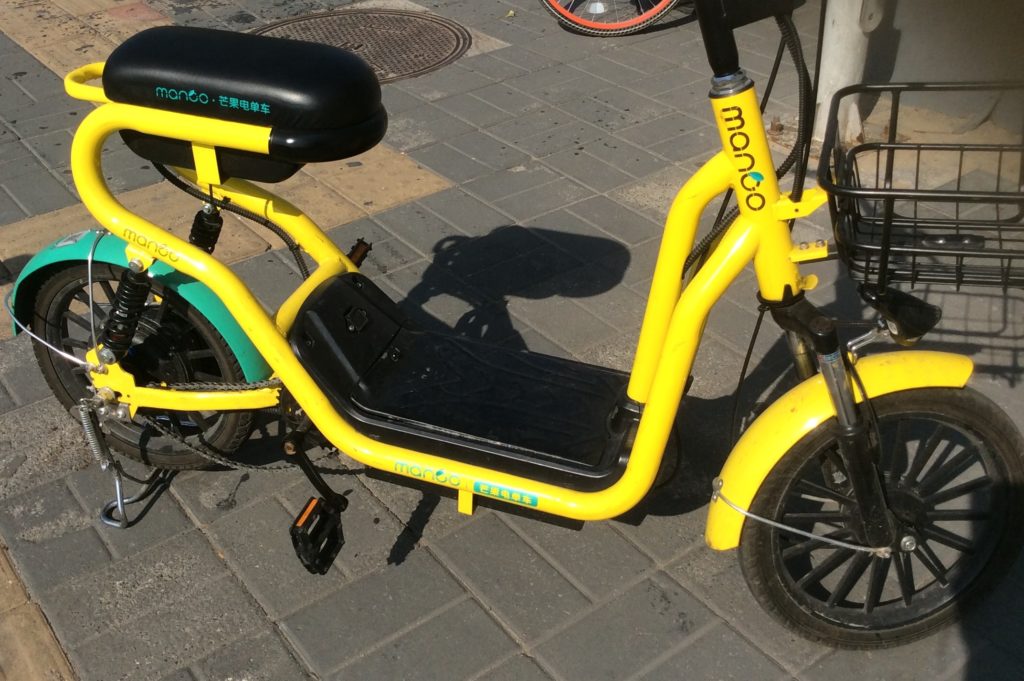In Part 1 and Part 2, I argued there is something new and powerful happening at Mobike, Ofo and bike-sharing in China. These companies and their presence in consumers’ lives have grown too fast. We are witnessing something new and important.
My explanation for this is “assets in the wild”. That bike-sharing companies have shown the power of releasing large numbers of mostly independent assets “into the wild”. That these assets are then able to exist and to sell products and services mostly on their own – and in spaces outside of traditional offline or online retail.
My definition for a “wild asset” is the following:
- Attribute 1: The asset can exist mostly on its own in the wild. You can just leave these bikes on the street because they do not need need staffing, support or to be returned to the shop, office or garage. They can exist mostly on their own in the world or in a controlled environment (like an office park).
- Attribute 2: The asset can market, sell and / or deliver its product or service mostly on its own. The real power of these mostly independent assets is that they are points of sale. They are designed to exist and to be able to sell mostly on their own. Thus, they can sell in spaces that have never been “retail spaces” before, such as in office hallways, in local neighborhoods, on subways, in parks, and even in the skies. They often can also do marketing and deliver the product or service. But their key function is to be a point of sale.
- Attribute 3: The asset can be released in large numbers. If you have designed an asset that can exist and do its primary sales function mostly independently, there is nothing stopping you from releasing thousands or even millions of them. So this is highly scalable approach – in a way traditional offline retail is not.
That’s my definition and my explanation for the startling power of bike-sharing. However, when you start to look at examples of existing and emerging wild assets, a couple of questions become pretty important – such as:
How often does the asset need service or to come home? How frequently does it need to replenish inventory, to charge up its batteries, to get maintenance or other? And how rugged and durable is the asset? Does it need a sheltered or controlled environment like a shopping mall or university campus? Or can it survive wandering the roads and woods of an environment? How does it do in the rain and wind? And so on. But the degree of independence of the asset is the critical question.
Does the asset market, sell and / or deliver the product or service in the wild? Which of these functions the asset does usually determines how complicated it is. Bicycles are actually a really nice example because they do all three things in a pretty simple way. But smart vending machines and check-out free convenience stores are points of sale and need their inventory to be replenished. Some wild assets could just be for marketing purposes. Autonomous cars and e-carts could be all three but are more complicated technologically and require charging and maintenance.
Is the asset mostly stationary, mobile but requiring direction, or independently mobile? Vending machines and post office boxes are stationary. Bicycles are mobile but get their direction from the user (or indirectly from the network). Autonomous taxi cabs are going to be very mobile but will require directions when not in use (initially). So how mobile the asset is matters. And it’s not a stretch to think think that some assets will soon just roam on their own of their own volition.
The economics of the asset tend to follow from the above questions. And the degree of independence of the asset is really the point of the entire definition and these articles. Just to make things simple, I tend to think in terms of wolves vs. house cats.
Wolves vs. House Cats
House cats mostly live in homes and backyards. They get their food at home every day. They come when it rains. And they are not great at surviving on the streets on their own (raccoons tend to eat them). House cats usually don’t go farther than the neighbors’ houses.
I use “house cats” as a description of wild assets you would mostly release in offices, shopping malls, universities, homes and local neighborhoods. These are assets that need a boundary or some degree of protection or support. And that may or may not roam around that much. House cats often need lots of support (new inventories, recharges, a launching / maintenance pad or location). And they are not designed to be durable enough to exist or do their primary function completely outside or independent of support for long periods of time.
A lot of “new retail” is sort of close to this. For example:
- The new smart vending machines by companies like Citybox are somewhat independent. These small-type, staff-less convenience kiosks are being placed in offices and business parks right now and delivering things like snacks and fresh fruits. But they are stationary (so far) and need lots of support.
- The new check-out free convenience stores being deployed by companies like Bingobox and Guoxiaomei are also not mobile. And they require restocking and electricity. But these are increasingly being deployed as stand-alone assets in business parks, universities and on street corners.
- Increasingly we are seeing smart vending machines for new niche products and services. Such as the high-tech coffee machines, fresh squeezed orange juice machines which are surprisingly popular (see below), video games and stand-alone karaoke kiosks.
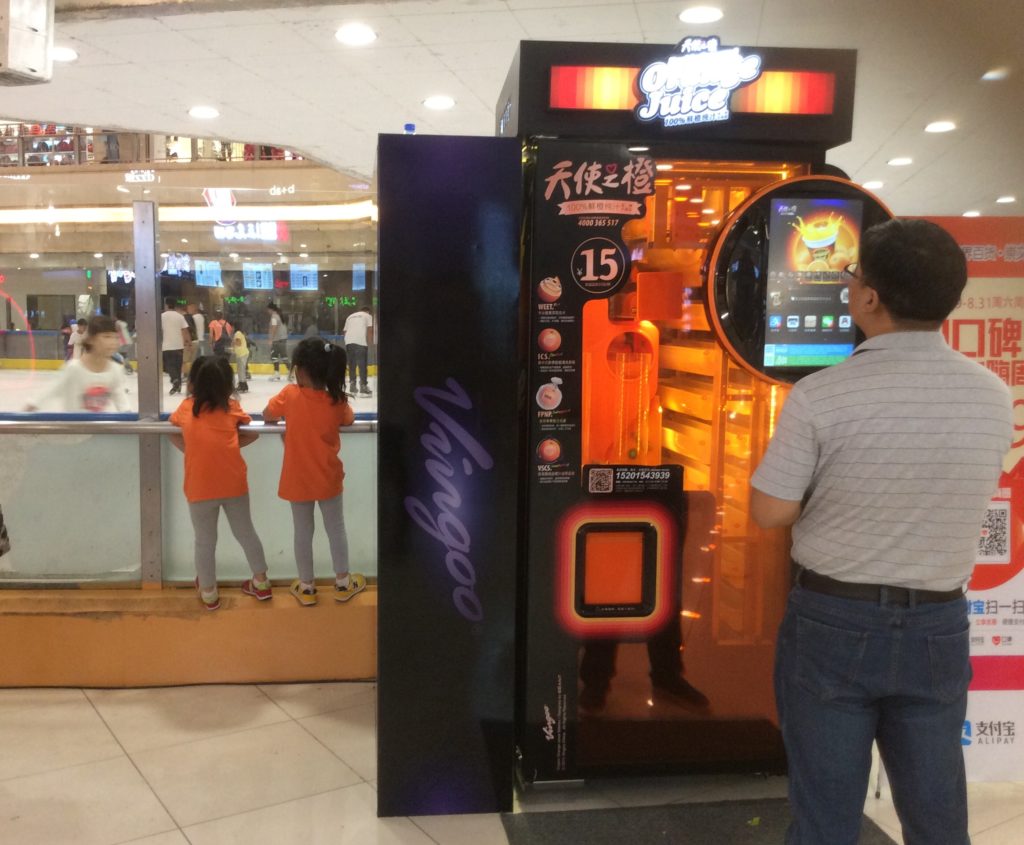 A father buys from a new orange juice squeezing machines, while his daughters wait.
A father buys from a new orange juice squeezing machines, while his daughters wait.
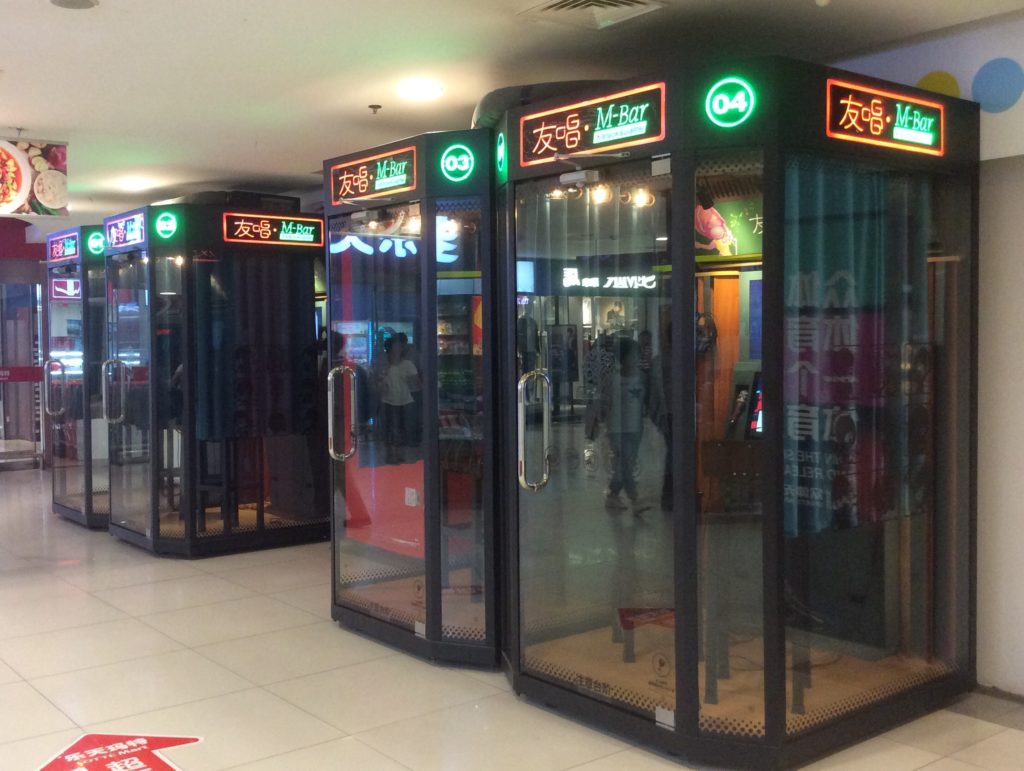 Karaoke booths in a Chinese shopping mall
Karaoke booths in a Chinese shopping mall
But couldn’t these “new retail” assets become more and more independent? Couldn’t they become more mobile? Could coffee machines roam the hallways of a business park?
Other types of house cats are different than this type of new retail. What about security monitors you could deploy around your neighborhood or school? How about electric scooters you use could freely at a university or in the office park? How about mobile advertisements? This discussion of the independence of assets quickly blends into a discussion of new retail and robotics.
At the other end of the spectrum are the wolves. You release them into the wild and you don’t really see them much again. They can hunt on their own and feed themselves. These are the wild assets that can exist in public spaces because they do not need staffing, support or to be returned to the shop, office or garage often. They are durable. And they can be mobile or mostly stationary.
These are Mobike’s smart bikes. They are designed not to need maintenance or any other support for 3-4 years. They have airless tires. The chains have been replaced by shaft transmissions. They are made of anti-rust aluminum. And they don’t need external electricity to power their smart locks and GPS (they have solar panels and peddling for this). Take a look at the video below (same as I posted in Part 1) of a single Mobike moving around for a year. It really does look like a wolf roaming about the city. For those who can’t play this Youtube video, you can see it on Youku here.
Examples of wolves are:
- Transportation assets, which are advancing rapidly. On demand bicycles have been joined by electric bicycles. Electric bicycles have been joined by on demand scooters (see photo below). And autonomous taxis and shared cars are coming soon. Autonomous trucks and other logistics assets are also probably coming.
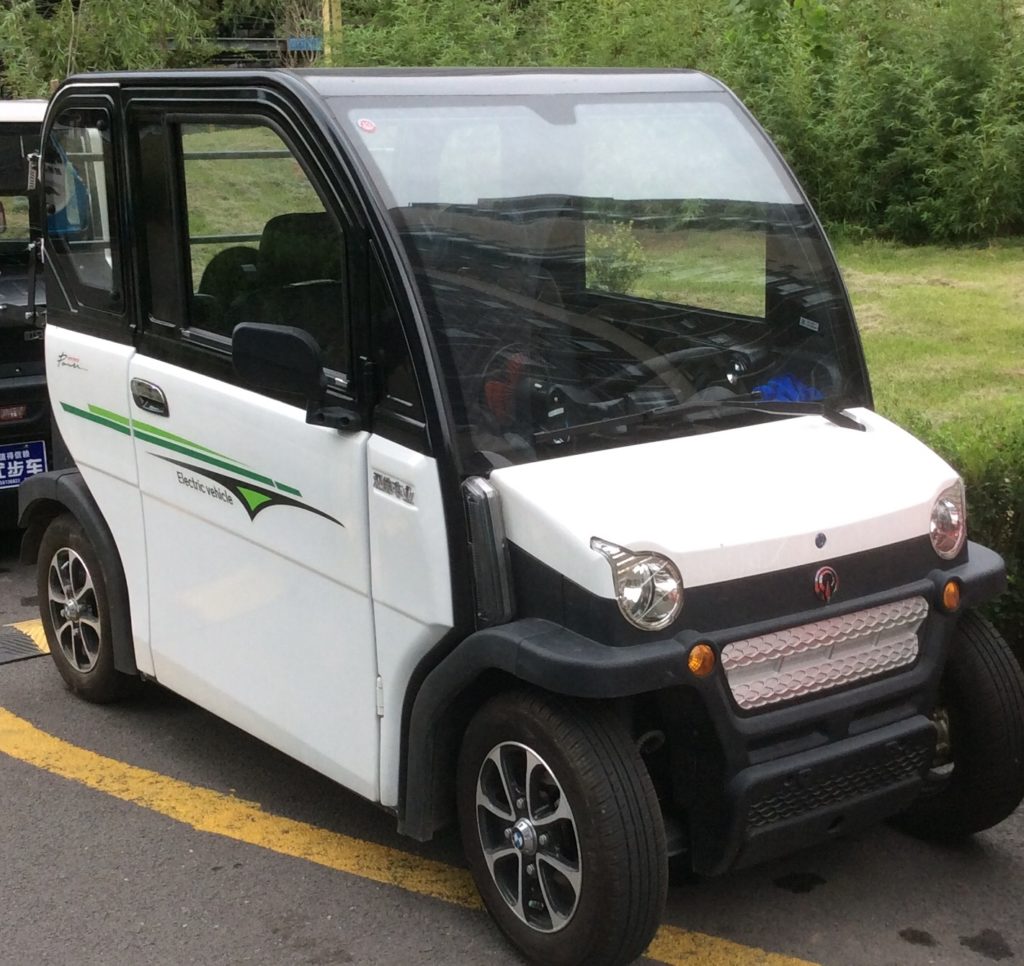 Chinese electric and gas karts are upgrading and upgrading
Chinese electric and gas karts are upgrading and upgrading
- Micro-rentals are another type of wolf that have been appearing in China this year. These are basketballs you rent from kiosks that stand-alone in parks. They are umbrellas that sit on railings around the city. They are batteries you pick up and use and they drop at another subway station. People are trying lots of stuff in this space right now. Most of these have been convenience offerings.
- Security cameras and other security assets are types of wolves. They are mostly independent as monitors. Whether they start patrolling roads, office parks, universities and borders will be interesting to see.
- You can point to interesting stuff going on with drones as another example. In China, they can now be hired for spraying farms and they don’t have pilots anymore. Other drones circle and check for pollution. These drones already operate out in the world with a surprising degree of independence.
- Finally, you can also point to other more traditional “wild assets” like outdoor signage (print and digital), park benches, vending machines, police speeding cameras and post office boxes. These assets are all getting smarter.
Capital Costs vs. Operating Costs
Smart bikes have upfront capital costs that you then depreciate over several years. But there are few maintenance and operating costs. You do have some operating costs as the locations of the bicycles need to be rebalanced over time (bikes tend to accumulate at the bottoms of hills). Mobike does this rebalancing by marking them with “red envelopes” and users can then get paid to move red envelope bikes to a different locations. You can frequently see Ofo vehicles (in photo below) moving bikes around town.
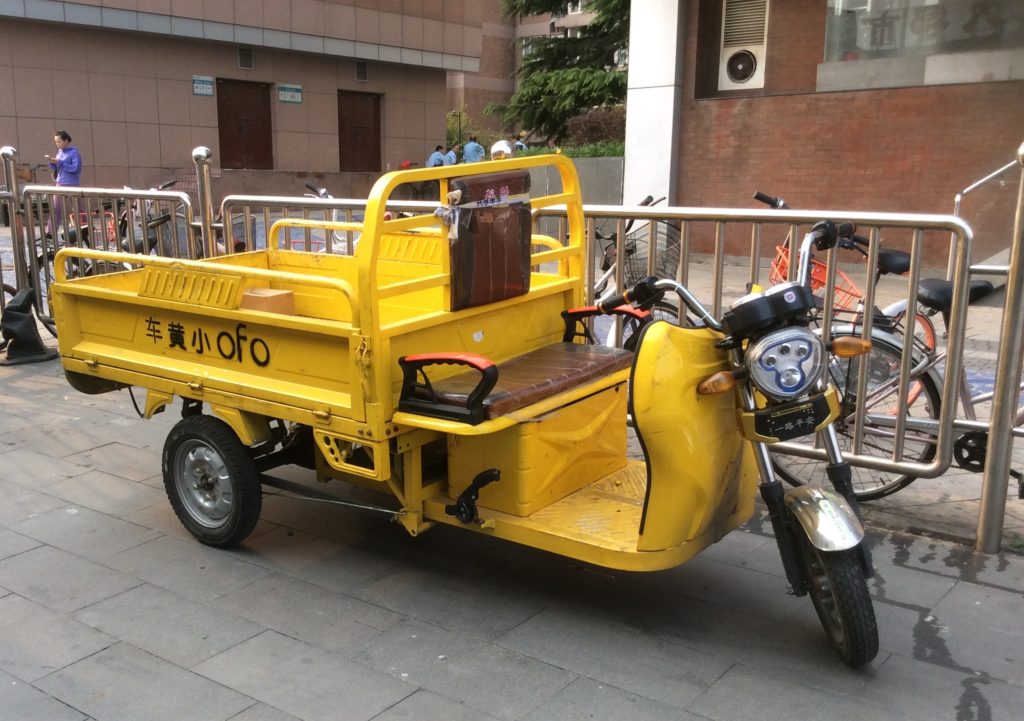 Compare this to shared electric bikes (like Xiangqi bike in photo below) which have greater capital, maintenance and operating costs. You have to replenish these bikes’ electricity about every 24 hours, so they require battery charging or battery swapping stations.
Compare this to shared electric bikes (like Xiangqi bike in photo below) which have greater capital, maintenance and operating costs. You have to replenish these bikes’ electricity about every 24 hours, so they require battery charging or battery swapping stations.
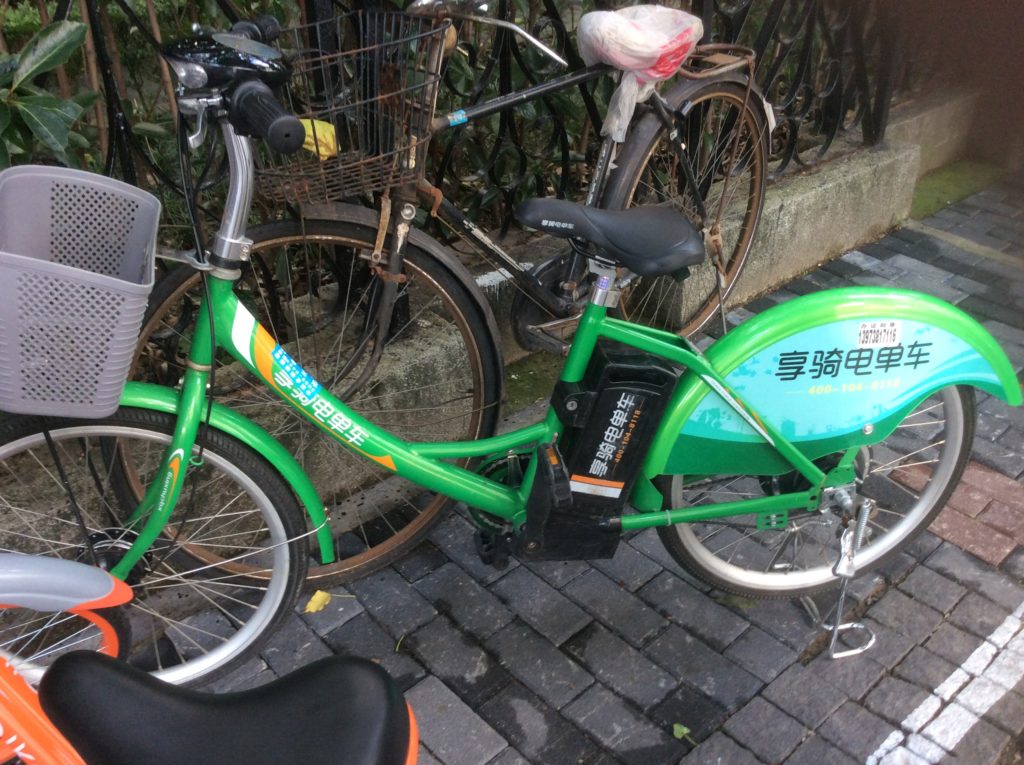 New smart vending machines, retail pods, stand-alone kiosks and other house cats may or may not have greater capital costs. Assets in more controlled environments don’t have to be as durable. And their depreciation expense will depend on how long they last. But they usually have greater operating costs. You need to replenish the inventory of the retails spaces frequently. They also might use a lot of electricity depending what they do, how mobile they are and how far they roam. House cats can be small, simple, less durable devices that roam or sit stationary in the neighborhood, office buildings or office parks.
New smart vending machines, retail pods, stand-alone kiosks and other house cats may or may not have greater capital costs. Assets in more controlled environments don’t have to be as durable. And their depreciation expense will depend on how long they last. But they usually have greater operating costs. You need to replenish the inventory of the retails spaces frequently. They also might use a lot of electricity depending what they do, how mobile they are and how far they roam. House cats can be small, simple, less durable devices that roam or sit stationary in the neighborhood, office buildings or office parks.
So it varies asset by asset. But the economics come down to five numbers, which get you an average profitability per asset over time.
- Price of good or service
- Capital costs and depreciation schedule
- Idle costs – Maintenance, inventory and other fixed operating costs per asset deployed
- Usage costs – COGS, wear-and-tear and other variable operating costs per asset deployed
- Utilization per asset
Final Point
Ok. This article was a lot of theory. So let me make just one final point. Because it is important to note what you are not seeing in the above cost picture. You are not seeing marketing spend. You are not seeing distribution or retail costs. You are not seeing sales staff costs. And you are (mostly) not seeing any rent. Public spaces and much of the wild is actually rent-free (at this point).
It turns out the economics are almost all about the last number: utilization. Utilization ultimately determines profitability and is the number nobody seems to be talking about in bike-sharing. But it is actually the thing that determines the success of companies like Mobike and Ofo. And utilization raises the fascinating question of herd size vs. herd intelligence, which is discussed in Part 4.
Thanks for reading, Jeff
Part 2 is here.
Part 4 is here.
——-
I write and speak about “how rising Chinese consumers are disrupting global markets – with a special focus on digital China”.
Photo by jeff

